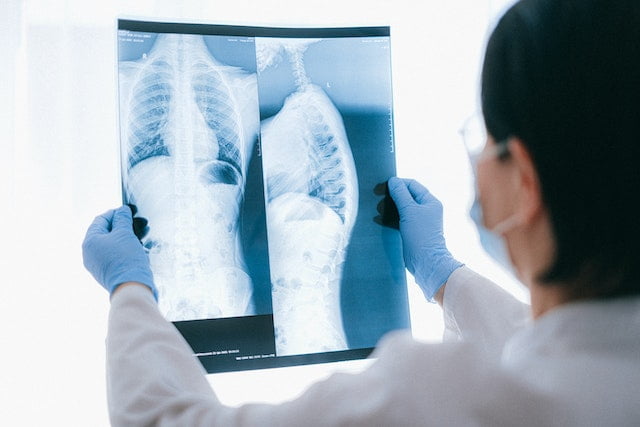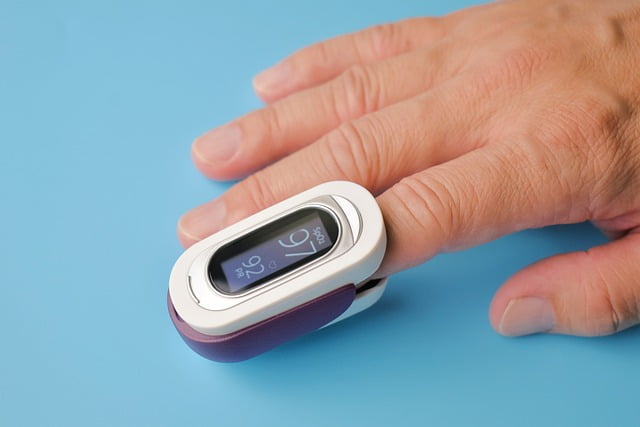According to the statistics, at the global level, approximately 500 million people are presently living with chronic respiratory illnesses. Imparting a 7% share in annual deaths, diseases associated with the lungs have been concerning from the very beginning. Despite the availability of multiple types of respiratory equipment, newer products with improved efficiency need to be developed and marketed.
Patients living with any type of respiratory disorder require special care which includes the provision of necessary equipment in association with therapeutic choices made by the physicians. In this article, some of the essential respiratory equipment has been enlisted along with the selection criteria that should be followed while making a choice.

A physician while making a diagnosis of respiratory disorders
An introduction to respiratory equipment
Respiratory equipment include the tools, appliances, machines, as well as consumables that are employed to assist a patient during the breathing process. This kind of equipment is usually needed by people with impaired functionality of lungs on a scale of mild to severe.
· Necessary respiratory equipment for patients
Markets are loaded with different types of respiratory equipment to choose from. Among these overwhelming choices, a suitable item is one that is in line with the patient’s respiratory needs. Some of the items included in respiratory equipment include the following:
- Oxygen source
- Ventilators
- Humidifiers
- Nebulizers
- Tracheotomy, laryngeal, endotracheal tubes, etc.
- Suction equipment
- Monitoring devices
- Air cleaners
- Continuous positive airway pressure (CPAP) machines
- Bilevel positive airway pressure (BiPAP) machines
- Oximeters
- Pulmonary function testing equipment (PFT)
- Disposable resuscitators

Oximeter: A respiration assisting device
Choosing the right respiratory equipment
While making a final choice regarding the respiratory equipment that is to be used for a patient, it is essential to keep three key factors in mind which include:
- Wearer: Respiratory equipment should be comfortable to use for the patient.
- Task: It should fulfill the job assigned to it.
- Environment: It should be compatible to use in the environment where it is to be employed.
If an equipment shows suitability based on the above-mentioned conditions, it is considered appropriate for the patient. In addition, the following parameters are also to be taken into account while choosing the right item:
· Equipment validity
Validation of an equipment is an indication of its fitness in terms of its installation and functionality. It is a manifestation of the well-documented process which has been followed to install the equipment in a proper way.
Moreover, it also ensures that the equipment is operating according to the requirements with complete accuracy. Validation also helps in the detection of errors that are present in equipment. While choosing respiratory equipment for a patient, make sure that the instrument has been validated and documented.
· Equipment calibration
Calibration is done by analyzing the equipment based on pre-set independent procedures. The findings of the tests are then matched with the standard values previously specified by the respective authorities. If the instrument meets the criteria, it is declared fit to be put into use. In the case of a respiratory equipment such as an oxygen cylinder, calibration is required to check if the device supplies oxygen at the rate that meets the requirements of the patient.
Health Supply 770 has a wide range of respiratory products which are available at the most affordable prices. Make sure to visit the website for more information on the items.
· Replacement Policy
When a purchase of respiratory device is made, it should be ensured that the equipment has a replacement policy. If the equipment has an error which is revealed once it is put to work, this replacement and return policy comes in handy. This way, the provision of well-functional equipment for the patient is ensured.
Conclusion
Patients suffering from respiratory diseases often need special medical equipment. These equipment not only ease the breathing process for them but also enhance the oxygen supply and saturation in the body thus contributing to the improvement in overall health.
Once the purchase has been made followed by proper validation and time-to-time calibration, all these factors render the respiratory equipment fit to use by the patient. Furthermore, the suitability of equipment must also be analyzed based on its user as well as the environment in which it has to be installed.
Uzma Zafar is a dedicated and highly motivated pharmaceutical professional currently pursuing her PhD in Pharmaceutics at the Punjab University College of Pharmacy, University of the Punjab. With a comprehensive academic and research background, Uzma has consistently excelled in her studies, securing first division throughout her educational journey.
Uzma’s passion for the pharmaceutical field is evident from her active engagement during her Doctor of Pharmacy (Pharm.D) program, where she not only mastered industrial techniques and clinical case studies but also delved into marketing strategies and management skills.
Throughout her career, Uzma has actively contributed to the pharmaceutical sciences, with specific research on suspension formulation and Hepatitis C risk factors and side effects. Additionally, Uzma has lent her expertise to review and fact-check articles for the Health Supply 770 blog, ensuring the accuracy and reliability of the information presented.
As she continues her PhD, expected to complete in 2025, Uzma is eager to contribute further to the field by combining her deep knowledge of pharmaceutics with real-world applications to meet global professional standards and challenges.







